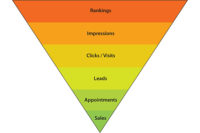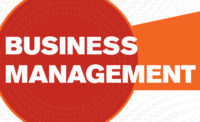What better way to attract potential customers for a business than to rank at the top of Google, Bing, and Yahoo for its products and services. Ranking organically in search engines is the ultimate form of inbound lead generation. Can you imagine how much new business could be generated if your business ranked on the top of Google for “air conditioning” or “heating?”
A common lament heard in business circles however is that search engine optimization (SEO) is dead, no longer works, or just costs too much to get results. All three statements couldn’t be farther from the truth. Sure, paid ads are a quick way to show up at the top, but most savvy searchers bypass the ads at the top and opt to click on the first few organic results.
We even hear many so-called SEO experts giving up on the tried-and-true SEO tactics in favor of other avenues, like social media, to direct relevant traffic. While social media has its place in an online marketing strategy, nothing truly boosts lead generation like a strong SEO plan and solid rankings. Every business needs to take advantage of the potential results it may achieve by doing what it takes to compete and start collecting that low-hanging fruit of new customers available on the web.
TOP SPOTS ON THE SERPS
Unfortunately, hundreds of thousands of websites are created every single year, making it harder and harder to rank among the top 10 spots on Page 1 of the search engine result pages (SERPs). Getting those coveted, top spots on search engines for related searches may seem inaccessible, but there are some strategies that can help. SEO methods have been around since the creation of search engines, but the algorithms that rank websites have changed quite a bit from those days.
Because the original algorithms created to rank websites on SERPs were easily manipulated, constant changes were made to make them more complex and weed out spam websites that delivered little to no value to users. The constant evolution of these algorithms has made it a real necessity for every business to have a serious, ongoing SEO strategy. As business owners, we all know that worthy achievements rarely come without deliberate and concerted efforts.
The good news is there are some basic on-page SEO tactics that can deliver real results in today’s competitive internet landscape, including focus keywords, which revolves around a list of words or phrases that are targeted to improve its rank. These keywords should be relevant to the business, brand, or service. It helps to have a specific keyword or phrase in mind for each web page a company creates. For instance, an HVAC business can have separate pages for products and services like “air conditioning repair,” “new a/c installation,” or “commercial air conditioning,” that focus the keywords in each page around the specific types of service. The keywords or phrases that are targeted will ultimately determine the focus of the content, meta tags, and the architecture of a website.
Long tail keywords should be highly valued, as they give businesses a better chance at reaching customers close to a point of purchase. Instead of trying to rank for generic terms like “a/c” or “air conditioning,” which are heavy in competition, use long-tail keyword phrases like “best air conditioning company for homes in western Massachusetts,” or “need a/c service in Dubuque.” Being more specific with keyword phrases, especially those that localize your results, will yield less competition and higher results for the pages. Plus, potential customers who use these more specific terms in their search are more likely to convert into paying customers.
Additionally, meta tags or meta data are inserted into the code of a page to help search engines determine what a web page is all about. Many website content management systems (CMSs), like Wordpress, have a plugin that can be used to easily fill in, change, or update this meta data all in one location for those business owners who aren’t familiar with HTML coding. There are several types of meta tags that can play a role in how well a site ranks in search engines, including title tags, description tags, alt tags, and keyword tags, to name a few.
Here’s an in-depth look at each of these tags.
Title Tag — The title tag is the text seen at the top of the browser bar when a web page is displayed. The key to an effective title tag is to use a keyword-specific title that tells both search engines and users what the page is about. Keep this to 60 or less characters and use every word wisely. It is all about matching the words that potential customers use when searching.
Meta Description — This is a brief, 160-character description that includes some keywords and a general idea of what the page content is about. These descriptions are often shown by search engines in results links. They also may be modified automatically to match the search query.
Keyword Tag — Fill in the keyword tag with words or short phrases deemed to be relevant to the page being created. Separate each word or phrase with a comma and add eight or less keywords or phrases in total. This tag has been devalued, but we still advise including it in the mix and feel that it is still worth completing.
Photo Alt Tags — Each and every photo on a website provides an opportunity to add an alt tag. This is a great place to add in specific keywords or targeted locations that can help boost rankings for those search queries. So, if a photo is of an “air conditioning technician working on the a/c system of a home in Farmington, Connecticut,” that should be the alt tag.
Heading Tags — These tags should be used throughout the content of every page or blog post to separate long blocks of text and separate headings or subheadings from paragraph text. There are six header tags that can be used — H1 through H6 — with H1 tags carrying the most weight or importance. At the top of every page, include an H1 tag that tells search engines what each page is about. Search engines compare the keywords found in the header tags with the associated content looking for relevancy and keyword consistency. These headings also serve to provide an enriched user experience that makes the content easy to read and follow.
Other SEO strategies, like placing internal links (these are links to other relevant pages on the website) throughout the website, creating local citations links, building high-quality organic backlinks from other strong websites, and always keeping the content fresh and up to date, are of equal value to the actual content on any site. Although the SEO landscape is always changing, many of the tactics we’ve discussed have stayed tried-and-true year after year.
For more details about how small- and medium-sized business owners can start utilizing SEO methods and strategies in their online marketing plan, contact me at any time.
Publication date: 1/16/2017
Want more HVAC industry news and information? Join The NEWS on Facebook, Twitter, and LinkedIn today!








